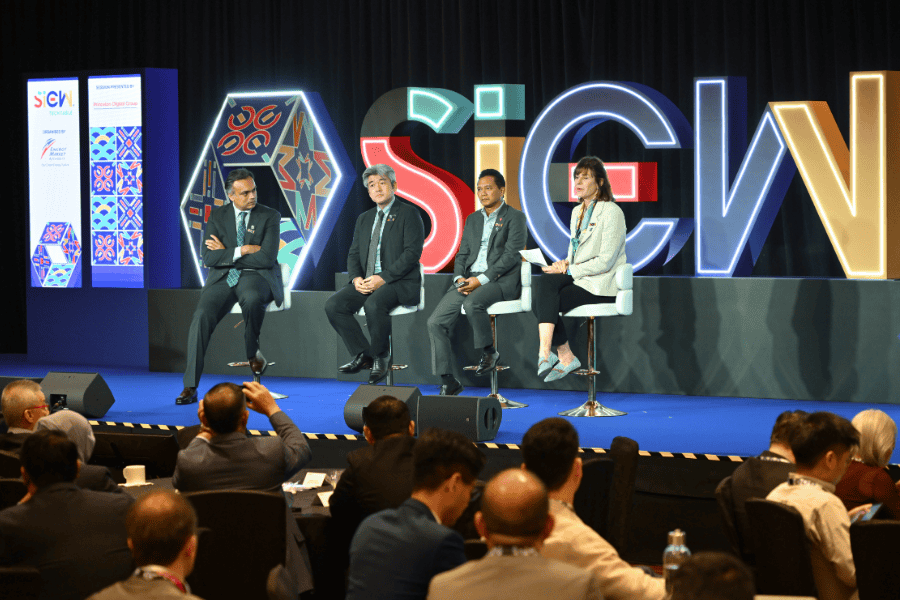As artificial intelligence (AI) and digital transformation accelerate, Asia Pacific's energy systems are under new pressure to deliver the speed, scale, and sustainability that tomorrow's digital economy demands.

At the SIEW TechTable on 'Powering the Digital Future: Aligning Data Center Growth with Asia Pacific's Energy Transition', industry leaders discussed how data centres are emerging as active participants in the region's energy transition. Their discussion also highlighted how new models of partnership are helping balance growth with decarbonisation.
The session featured Varoon Raghavan, Co-founder and Chief Operating Officer, Princeton Digital Group (PDG), Izumi Kai, Chief Executive Officer, JERA Asia, and Datuk Kamal Arifin bin A. Rahman, Chief Retail Officer of Tenaga Nasional Berhad (TNB). The panel was moderated by Claire Perry O'Neill, former Minister for Energy and Clean Growth, U.K.
AI is accelerating digital energy demand
Artificial intelligence is amplifying data growth across Asia, creating new pressures on power systems. Mr Raghavan called AI an accelerant for growth that is driving more internet, cloud, and mobile use. In turn, this is increasing energy demand.
He noted that while the US is seeing single-site, gigawatt-scale projects, Asia's growth is more distributed across availability zones in markets such as Malaysia, Indonesia, Japan and India.
This multi-market expansion, he said, presents both opportunity and responsibility as digital and energy systems evolve together.
Energy reliability underpins digital growth
Datuk Kamal highlighted how Malaysia is strengthening its grid to meet surging data demand. This is growing from 1.4 gigawatts (GW) today to 6 GW in the pipeline. TNB's next regulatory period will double its grid investment, expanding capacity and resilience to support new data centres.
Cross-ministerial coordination keeps Malaysia's infrastructure planning holistic. It helps balance reliability, affordability and sustainability as energy demand grows. TNB also manages over 30,000 km of grid lines and serves 10.5 million customers, underscoring the scale of its role in powering Malaysia's digital economy.
Pragmatism guides decarbonisation

Mr Kai stressed that each market's pathway to clean power must reflect local realities. JERA, which supplies about 30 percent of Japan's electricity, is introducing ammonia and hydrogen co-firing in thermal power plants. At the same time, it is continuing to expand renewables. He noted that stable, reliable electricity remains essential even as emissions are reduced. Transition strategies, he added, must be tailored to land use, available resources and national policy frameworks.
Echoing this, Mr Raghavan shared that PDG follows a "green-first" approach in site selection, choosing locations with renewable potential or government support. While data centres may not begin with fully green power, PDG sets a clear roadmap to 100 percent renewable supply. This is supported by grid decarbonisation and mechanisms such as Malaysia's Corporate Renewable Energy System (CRES) and the Green Energy Tariff (GET).
ASEAN's shared advantage
Speakers agreed that ASEAN can emerge as a global hub for green digital infrastructure. The region combines strong economies, progressive policies and abundant renewable resources, from solar and hydro to geothermal energy.
TNB's 265-megawatt (MW) data centre project in Johor, delivered in just nine months, was cited as an example of how coordinated public–private partnerships can deliver both speed and sustainability.
Speakers also noted that greater regional interconnection can enhance energy security and competitiveness by linking clean power and data networks across borders. Collaboration, not competition, will unlock this opportunity for the region.
Collaboration will shape Asia's digital and energy future
The discussion closed on a shared recognition that energy and digital transitions must advance together. Delivering both securely and sustainably will require robust grids, credible decarbonisation pathways. It will also depend on strong partnerships that can keep pace with Asia's growing digital economy.
Ms O'Neill reflected that the region's success will depend on speed, flexibility, and openness. She noted that building stronger energy and digital systems today will be key to powering tomorrow's energy and digital future.
Stay tuned as the conversation evolves throughout the day. Follow @SIEW_sg on Telegram and X (formerly Twitter) for the latest insights.